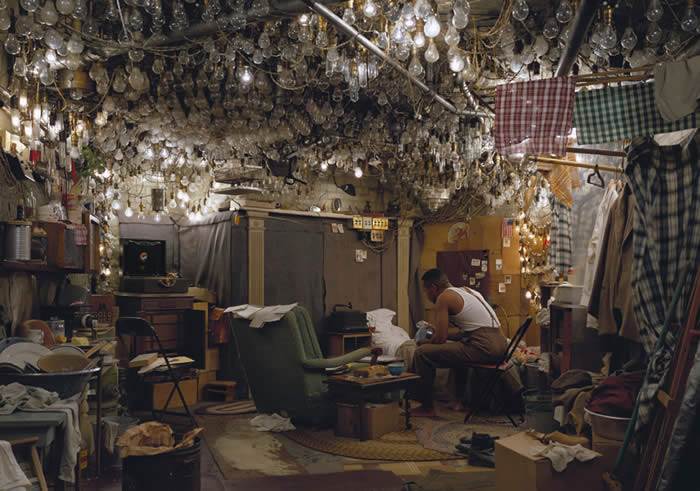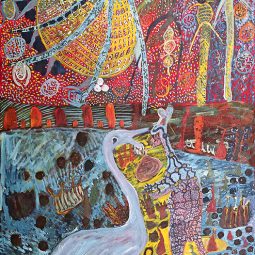The first Australian survey of the work of Canadian photographer, Jeff Wall, is being presented by the Art Gallery of Western Australia. ‘Jeff Wall: Photographs’ comprises 26 works that are described as reconstructions of reality, observed and analysed by Wall.
Since the late 1970s Wall has set out to redefine the paradigms of photography to help him become a “painter of modern life”, creating cinematographic or near-documentary photographs in constant dialogue with historical art forms, cinema and literature. His approach to photography is diverse, ranging from illuminated colour transparencies in light boxes, to black and white prints and intimate small-scale photographic observations.
At first, Wall’s works look like snapshots but a closer inspection reveals that they are staged compositions, using actors as protagonists and artificial lighting to create a narrative technique. The actions of the characters become “images of collective memories”. Wall creates a subtle interplay between the defined figures and their surroundings. Through careful examination of his work “layers of complex spatial, temporal and contextual issues emerge”. These issues reflect different characteristics of contemporary reality, compressing human drama and political overtones.
The Destroyed Room was Wall’s first major work, a photograph of a vandalised room based on Delacroix’s painting The Death Of Sardanapalus (1827). It depicts a woman’s destroyed bedroom – her clothes and personal belongings scattered across the floor, and the furniture, doors and walls damaged or demolished. It is an image of violent chaos which can be understood as an act of “publicised privacy”. The viewer becomes a spectator, a witness to a specific moment. The opportunity to observe a fixed frame in time heightens the viewer’s curiosity and deep examination of the work becomes almost voyeuristic in nature.

A Sudden Gust Of Wind (After Hokusai), which is based on one of Katsushika Hokusai’s 19th-century woodcuts of Mount Fuji, has the immediacy and high drama of a film still – bare trees bending in the wind, people crouched and hanging on to their hats – but is, in fact, a composite of more than 100 photographs taken over two consecutive winters at a cranberry farm. “Working digitally slowed things,” Wall says of the project, “It made the process more complicated and, I hope, deeper.”

His ‘manufactured’ images overlap the worlds of reality and fiction, producing penetrable boundaries and a visceral impact on the viewer.In the gallery, Wall’s light boxes have a dominating physical presence, allowing the viewer to revel in “new pictorial realities”. These large, backlit images create a three-dimensional mise-en-sc√ãne allowing the viewer to physically explore the work’s environment.
Wall’s photographs are less concerned with recording reality than with emphasising psychology, narrative and response. Their ambiguity is their lure. The eye is drawn to the radiance, the scale, the staging and the detail. They allow the viewer to become an active participant in a mise-en-scène – to pause and enter a decisive moment in time.
Art Gallery of Western Australia
26 May – 10 September
Perth
Jeff Wall, A sudden gust of wind (after Hokusai), 1993, transparency in light box, unique state, 250 x 397cm
Courtesy of Tate, London
Jeff Wall, After ‘Invisible Man’ by Ralph Ellison, the Prologue, 1999-2000, transparency in light box, AP, 174 x 250.5cm


